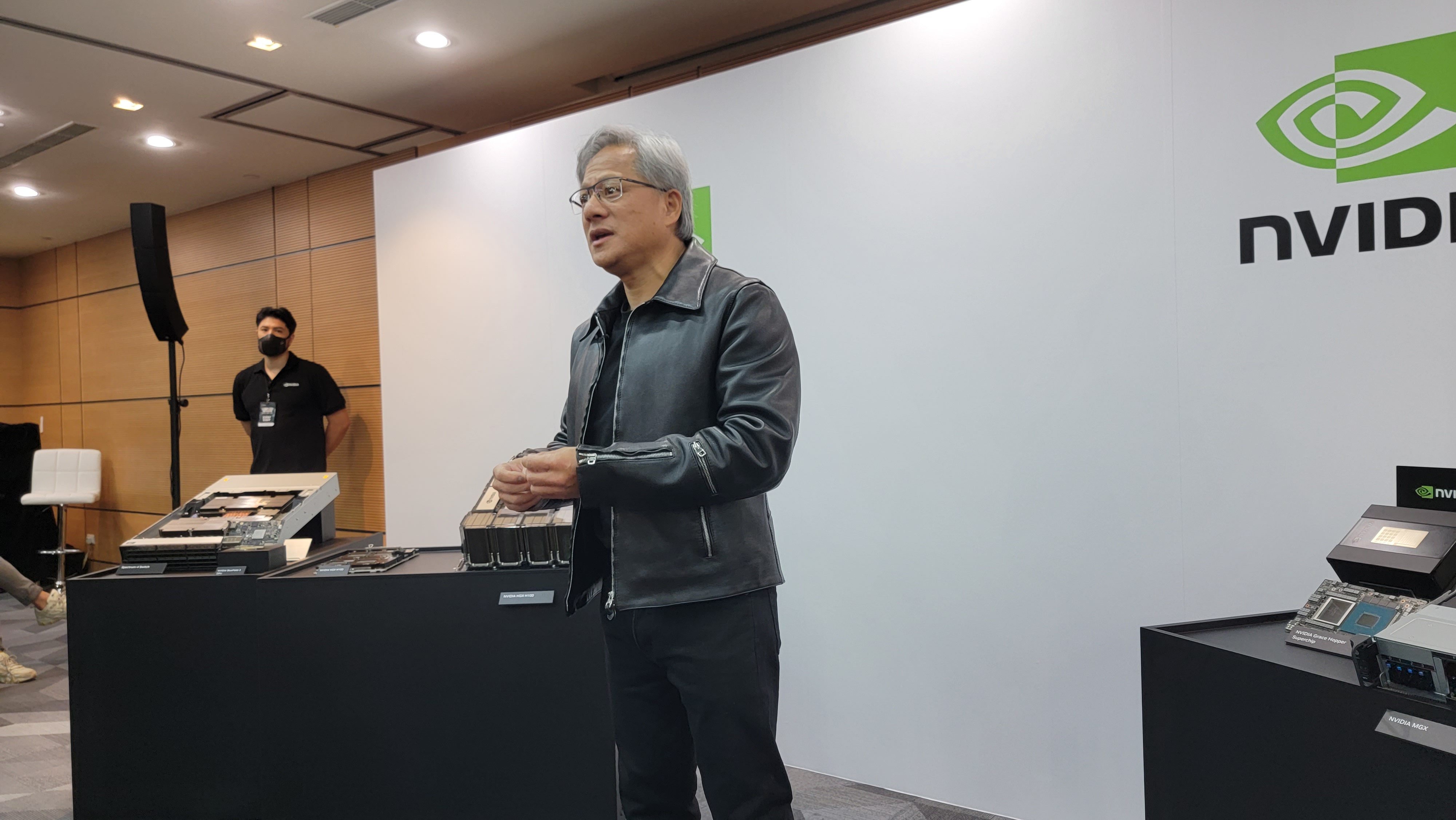
It's becoming more likely that Intel could build Nvidia's future GPUs. We attended a question and answer session with Nvidia CEO Jensen Huang here in Taipei, Taiwan, and Huang said that the company is working to diversify its chip manufacturing and had recently received good test results for an Intel test chip based on the company's next-gen process node. His statement came after several of the questions centered around Nvidia's efforts to assure supply in the face of explosive demand for AI chips and the company's complete reliance on Taiwan-based TSMC for its most advanced GPUs.
"You know that we also manufacture with Samsung, and we're open to manufacturing with Intel. Pat [Gelsinger] has said in the past that we're evaluating the process, and we recently received the test chip results of their next-generation process, and the results look good," Huang said.
Huangs remarks come nearly a year after he first signaled that Nvidia was in talks with Intel's Foundry Services (IFS) to manufacture some of its chips, which is made possible by Intel's recent shift to an IDM 2.0 model that will see it making chips for other companies with its latest process nodes.
Naturally, Intel will create its own test chips based on its own designs to share data with its customers about the health of the process node, so it isn't a given that the chip bears an Nvidia design. Huang didn't specify whether or not the test chip results came from silicon based on Nvidia's architectural design, or which process node was tested.
It is possible that the chip could be based on an Nvidia design, though: In January, Intel surprisingly announced that it had signed an order for chips based on its Intel 3 node. The company had originally stated that its first IFS chips would be based on its 20A, 18A, and 'Intel 16' nodes.
"I am very happy that we were able to add a leading cloud, edge, and data center solutions provider as a leading-edge customer for Intel 3," said Pat Gelsinger, Intel CEO. Intel hasn't revealed the name of the customer, but we do know that the Intel 3 node is scheduled for manufacturing end products in the second half of 2023.
Nvidia certainly could fit the description of Intel's new customer, but so could many other companies. In either case, Huang's comments today could fuel speculation that Nvidia is the new unnamed Intel customer. That isn't assured, and it is unlikely that Nvidia would tap Intel for its most important chips at first -- any early engagements would probably be designed to minimize risk for both companies until a good working relationship can be established.
It is clear that Nvidia is serious about possibly using Intel as a manufacturing partner, and given that all of Nvidia's leading-edge GPUs are produced in Taiwan, that would help alleviate supply chain concerns from both the escalating US-China and China-Taiwan tensions.
Both Intel and TSMC are building fabs in Arizona, giving Nvidia a few options for US-based chip production. However, TSMC's Arizona fab will produce chips on the 5nm node, which will be an older process node when the fab begins production. Nvidia will obviously need access to newer nodes to remain competitive with AMD and a plethora of other competitors, so the fact that Intel is making its US-manufactured advanced nodes available to its customers could give it an advantage over TSMC.
Beyond the Intel 3 node that will come into production this year, Intel also has its 20A node that remains on track for production in early 2024, providing Nvidia with a few options. However, while Intel is surely already making test chips with its 20A process, Intel's 20A process design kit (PDK) was last known to be on revision 0.5, meaning it isn't ready for chipmakers to use for new designs yet. Intel also has its 18A process coming in late 2024.
Selecting Intel as a foundry partner could help Nvidia establish resiliency and redundancy in its chip supply, but there are other challenges, too. As Huang pointed out during the session, a single DGX system (a server with eight GPUs) contains over 35,000 components from a multitude of suppliers. Due to the explosion of demand for GPUs in the face of the generative AI wave, Nvidia is also working to boost the supply of all of those components in the nearer term, but it will also have to work on long-term redundancy for those supply chains, too.
Huang also reiterated that the company has boosted orders with TSMC for its A100 and H100 GPUs to help satisfy the tremendous demand for its A100 and H100 GPUs.







